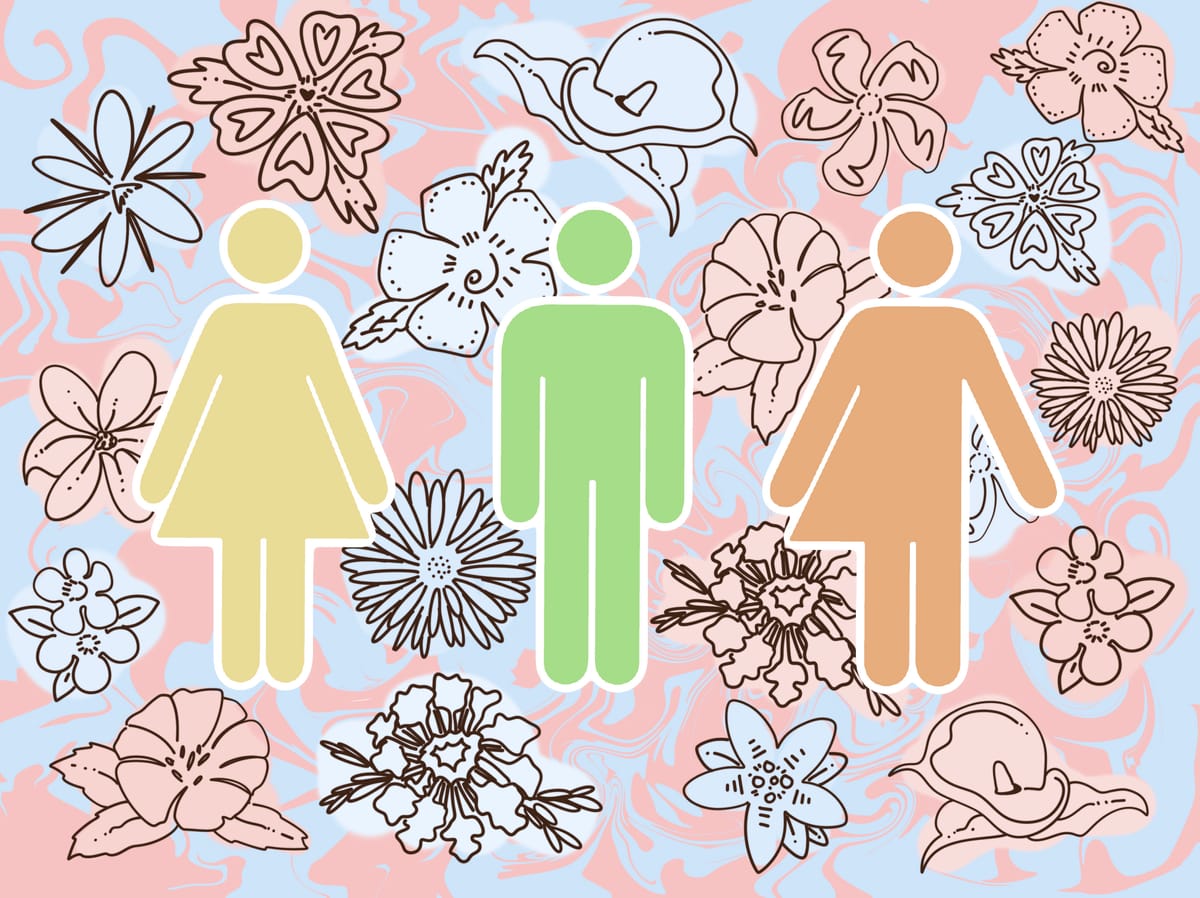I went to rank bathrooms. I found a problem.

Nearly a month ago, I had the privilege of visiting and ranking all the men’s bathrooms on Augustana’s campus. As I was doing my research, I visited a second-floor, gender-neutral bathroom in the Humanities that had a small, handwritten note taped to the outside of the door, which read something to the effect of “This is the only bathroom on this floor that is accessible to people with disabilities. Just keep that in mind.”
As I delivered newspapers across campus the following week, I got only positive reception from departments across campus. But it made me wonder, would Augustana respond the same way if I wrote a more serious article on bathrooms?
I’m 22, and I’ve used my fair share of bathrooms. I — a white, cisgender, non-disabled man — like to think my awareness of social issues is pretty good, but my sociology professors (shoutout to Drs. Vercel and Ciaralli) have taught me much more than I could’ve gathered on my own. In just a few years, I’ve been made aware of and seen firsthand disparities in our public restrooms. Especially now, when minority groups are discouraged from writing in college and university publications about sociopolitical issues, it is essential that a diverse, equitable and inclusive perspective remains in our campus community’s discourse.
As much as I like to take my time in the restroom — considering the ambience and acoustics of it all — bathrooms are safe spaces for very few people.
Though we want to believe that bathrooms are the private places they ought to be, they are just as public as anywhere else, aside from being segregated by gender.
Welcome to the sociopolitical field of potty politics: Bathrooms come with socially acceptable behaviors according to one’s gender, ability and race.
Men do not need the same amount of space as women do in public bathrooms. If some of the space given to men was given to women, women would face shorter lines and men would sacrifice little time.
In the men's restroom, stalls and urinals are typical, and in women’s bathrooms, there are usually only stalls. Urinals have been proven to reduce time spent in the bathroom, making it quick for users to do their business and let the next user do theirs. No female alternatives for urinals exist for the women’s bathroom.
In addition, men’s restrooms contain four urinals, a stall, and a handicapped-size stall; because the urinals take up less space than stalls, women’s restrooms can fit fewer appliances, which results in an even slower turnaround for users. Let’s not forget to mention that shelves and coat hooks exist for users in the female restroom, inviting users to be more comfortable, whereas the men’s restroom has no such thing.
Many women also face outlying social pressures, including the use of makeup. Bathrooms, which received the colloquial name “powder rooms” during the Victorian era, became places to both do one’s business and touch up one’s makeup — another reason for longer wait times in women’s restrooms.
While we’re on the topic, let’s also not forget to mention that cisgender women have periods, resulting in more trips to the restroom, and that women are more often tasked with taking care of young children.
If we collectively decide to make all bathrooms gender neutral, it may feel strange for the first few months, but I believe that we’d all get used to it very quickly. We’ve seen how the abnormal can become the norm with masking and social distancing from COVID. Then, we’d all have more space and time to do our business.
Although bathrooms are divided primarily by the binary gender system, individuals with large body sizes, disabilities and transgender identities also face troubles in public restrooms.
Spaces between dividers can be too small for fat individuals to use. Oftentimes, small spaces for urinals force fat people to occupy stalls, which may further emasculate them, on top of receiving societal judgment due to their size. If a bit more space was given to each urinal, more people would be able to use each.
Buildings must have accessible bathrooms according to the Americans with Disabilities Act, but buildings are not required to have accessible bathrooms on every floor. This means that wheelchair users must sometimes ride the elevator to a different floor to use the restroom.
When they get there, improper signage on the handicap-accessible stall may mean a non-handicapped person is occupying the stall — the one toilet that qualifies the whole building as legally accessible. For this reason, proper signage should be posted on all legally accessible bathrooms if building designers are going to continue to not give people with disabilities options.
Transgender and gender-nonconforming people face their own set of issues in the bathroom.
When transgender individuals use the bathroom that feels correct to them, their choice validates their gender identity; however, if they are forced to use the bathroom that corresponds to their biological sex, they face both psychological and potentially physical dangers.
If trans women (male-to-female) use the men’s restroom, they not only fail to be in line with their gender identity, but they also risk verbal and physical violence by cisgender men. On the flip side, trans men (female-to-male) who use the women’s restroom risk similar verbal harassment by cisgender women.
When lawmakers want trans people to use the bathroom that aligns with their biological sex, I can’t help but think of them as selfish. Cisgender people risk nothing when a trans person uses the restroom. By making the argument one of “comfort” — mind you, in a public space — it becomes clear how little our lawmakers know about the trans experience.
Moreover, just because we haven’t been segregating bathrooms by race since the Civil Rights Act of 1964 doesn’t mean race isn’t relevant to the bathroom conversation. For Black individuals, all of the consequences of being fat, disabled or transgender are compounded: facing more hostility and aggression, as well as a greater likelihood of violence.
All in all, public restrooms need to be more inclusive. When it comes to gender, ability and race, bathrooms are disproportionately designed for the white, slim, cisgender, non-disabled man and woman. If we are intentionally diverse, equitable and inclusive in our perspectives during bathroom design, we make the bathroom a safer, more pleasant place to be.
Maybe then the bathroom can be a safe space for everyone.



